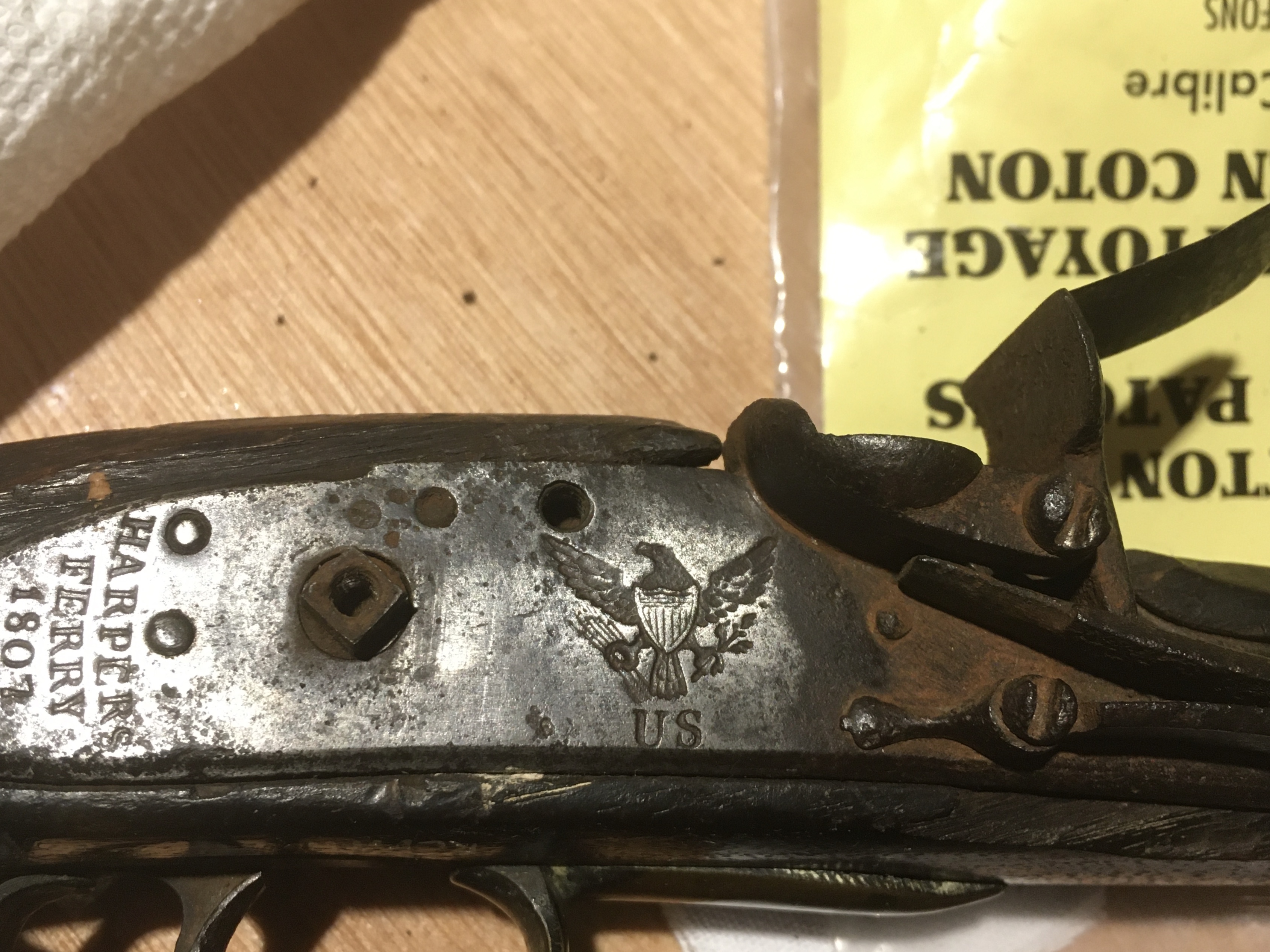The Pergamon Altar in Berlin was bleached of its paint in the 1900's prohibiting modern historians from using new technology to recreate its original look. (Workers washing the altar again in 1945, Pergamonmuseum, Staatliche Museen zu Berlin)
By Stepan Popov
Our treatment of historic items has changed dramatically in the past 60 years. Historians used to clean or restore artefacts to how they envisioned they looked in their original state. This has proved to be a poor tactic as not only does the act of removing the historic patina uproot a lot of personality and individual history from the piece but, the “look” is also based on our current (and constantly changing) perception of the historic period. Modern historians attempt to keep all of the historic individuality and wear on an item. However, there is still a problem when a museum has an item which is corroding or falling apart on its own. What is to be done?

Rust damage on a 1807 Harpers Ferry Flintlock pistol. Notice the rust where the metal and wood merge. (RCMI)
Leaving it to decay is certainly undesirable. Would it be ethical to restore it to its original condition in this case? It could be, although that would still remove the individual history of the piece. A great alternative to this would be conservation of the artefact. This process could be done in numerous variations. The simplest halts the advances of any corrosion and solidifies the item in its current state. A more involved process removes all of the problematic/corroded parts while returning the item to a condition it should have been in if it was properly looked after. The second process of conservation is invasive and delicate. It could lead to the item becoming different visually and, of course, losing some of its personal story.
How can one decide what method is to be used? That all depends on what is to be done with the artefact and its value. If an item is too delicate and will not survive a “full” conservation process which would return it into good shape, it should be conserved in its original state. If it is used as a reference object then it could be stored in a jar of oil or formaldehyde which is in a climate-controlled basement. If the object is to be put on display or handled, it would be unattractive if left in such a state. In such a case, a more invasive conservation could prove to be the answer.
Midway through conservation effort. Notice the lack of rust where it previously was and the saturation of oil on problematic parts (wood and metal connection). (RCMI)
My museum internship has given me an opportunity to perform a minor conservation on an antique flintlock. Said piece was in poor condition when it was donated to the museum and has deteriorated further with time. I was able to stop the majority of the corrosion and will later return to a more involved conservation technique. Old firearms cannot really be kept in a completely isolated state as they have both wood and metal. These require different solutions in order for them to stay unreactive. An involved conservation which would return this 1807 harpers Ferry flintlock into what it should have been if properly taken care of seems to be the best option. Especially as the alternative is for it to rust into scrap metal.
